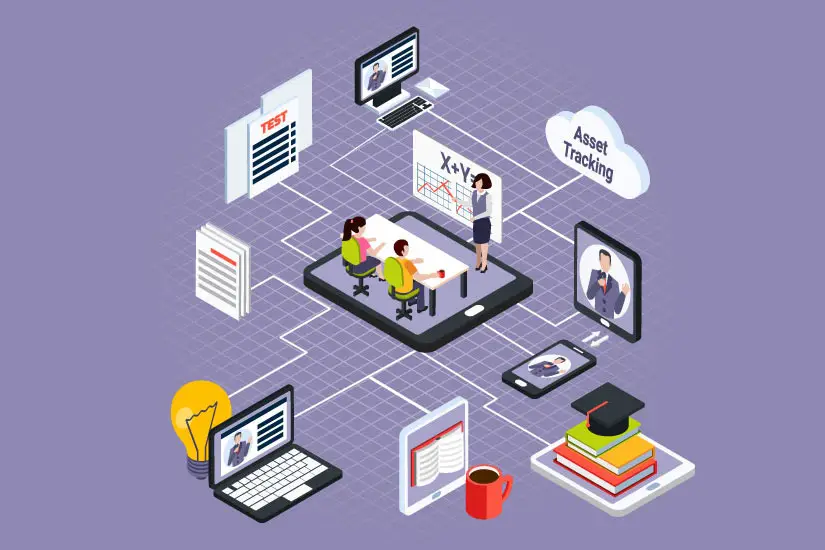The key to success lies in a combination of economy and ease of use.
Remote Asset Management significantly transforms business processes, provides many benefits, improves your business performance and lets you maximize profits with the power of technology. Developing and executing a comprehensive asset management strategy required careful planning and a balance of risk and expense.
In this article, we discuss the various trends affecting the industry and how they are affecting the implementation of remote asset management solutions.
What is asset management?
Asset management is the process of efficiently managing and controlling assets. This process manages the entire life of the plant, including maintenance and replacement of old parts, as well as the installation of new parts. In addition, wealth management enables you to make meaningful decisions.
What does this process involve?
In any scenario, the management process often requires the use of wireless technology to monitor activities and execute jobs that help maximize asset value. The asset management process is a systematic approach to planning, managing and controlling all asset-related information and monitoring assets based on information. This asset information includes the purchase of an asset, the current operating status of an asset, the maintenance of assets, the renewal and sale of assets.
The asset management process aims to improve the operational potential of assets and reduce all risks. In the classic context, wealth management involves many challenges and risks. Some of these are implementation challenges, strategic challenges, institutional challenges, measurement challenges, integration challenges, and analytical challenges.
What is Remote Asset Management?
Remote Asset Management is an analytical system that enables remote monitoring and maintenance of assets, machines and plants. Remote asset management enables real-time, two-way communication between the company’s assets and the central monitoring application, resulting in better asset control and management.
Thus, remote asset management offers advantages in terms of cost-effective, efficient and convenient monitoring operations, which further encourage organizations to adopt the technology. The unprecedented benefits offered by remote asset management systems are fueling the remote asset management market.
Where is it usually applied?
Remote asset management is an important aspect for companies or organizations to manage their assets efficiently. It can also be used in the following areas:
● Energy and information structure services
● Chemical, oil and mining
● Production
● Transportation
● Life Sciences
● Healthcare
● Nuclear power plants
Remote asset management of this type can also involve the use of GPS tracking to determine when raw materials are arriving at a specific location or when a customer order is being delivered. Instant access to this type of data can go a long way in improving business efficiencies and improving relationships with vendors and customers.
The advantages of remote asset management & monitoring
The systematic integration of new technologies such as Internet of Things (IoT), cloud and imaging enables companies to increase security, save costs and improve uptime at remote locations. The estimated increase in the number of IoT connected devices and globalization has led to an increased demand for remote asset management systems.
The main benefits
The choice of technology is easy for companies. Challenges arise in terms of value capture, use case identification, and scalability. Implementing an IoT solution streamlines the entire asset management process that encourages organizations to remain competitive. Here are the main advantages:
➢ Take proactive action: Instead of waiting for a sudden equipment failure that causes chaos, line managers could pinpoint problem areas using predictive maintenance solutions.
➢ Agile solutions to increase productivity: IoT-based asset monitoring provides real-time visibility of asset usage and insights into load balancing and operating cycle times that increase productivity.
➢ Improving energy and cost efficiency: process from procurement to floor care purchase to supply chain and operation, high-value assets provoke development across the entire workflow.
➢ Overall Equipment Effectiveness (OEE) Optimization: OEE is the key metric to measure the productivity and efficiency of a manufacturing unit, which helps in decision support to minimize losses. With IoT technology, manufacturers can analyze their three key aspects, namely quality, availability and performance, in real time.
How is remote wealth management done?
With IoT-enabled asset management, you can manage the lifecycle of your asset while gaining important insights into where your asset is, what it’s doing, and how it’s doing it. You can also control processes while getting real-time alerts and visibility and insights from data. IoT technology can not only transform traditional wealth management, but also help you create new business models.
An IoT-enabled asset management solution typically includes:
● Remote asset tracking
● Health/health monitoring of assets
● Asset Lifecycle Management
● Asset workflow automation
● Predictive asset maintenance
Manage inventory and improve operations
● Gain insights into real-time data: Extract and analyze real-time information from a variety of sources to make faster, smarter business decisions.
● Improve inventory management: Replenish inventory in the right quantity at the right time to maximize profitability.
● Locate and Identify Lost Equipment: Quickly locate and identify lost or stolen items to improve theft prevention and recovery.
● Reduce costly problems: Monitor event alerts and take immediate action to reduce the negative impact of malfunctions or other problems.
● Create new business opportunities with remote asset tracking: Offer your customers new services, e.g. B. proactive replenishment of spare parts or consumables or preventive maintenance.
Conclusion:
Smartmakers has the right solutions for remote asset management
Organizational support for remote asset management is crucial to make remote working a success.
Poor wealth management costs you time, money and frustration. Even a small failure at a critical time will leave you behind, skyrocketing costs and increasing your bottom line. It is possible to solve asset management problems. Smartmakers.io has the right solutions for remote asset management. To get more insight into the benefits of remote asset management, we encourage you to take a look at our services.
